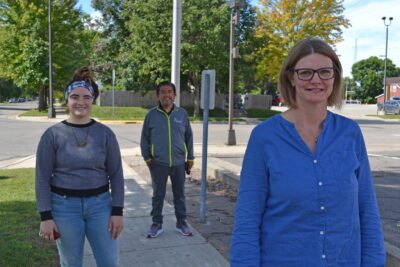 Last year, Southwest Initiative Foundation (SWIF) recruited communities from our region to be part of a pilot program for advancing race equity. City administration, elected officials, educators and school staff and other community leaders took part in a year-long training that helped them analyze policies and practices that create barriers to racial equity and explore how to remove them.
Last year, Southwest Initiative Foundation (SWIF) recruited communities from our region to be part of a pilot program for advancing race equity. City administration, elected officials, educators and school staff and other community leaders took part in a year-long training that helped them analyze policies and practices that create barriers to racial equity and explore how to remove them.
The nonprofit Government Alliance on Race and Equity (GARE) and the League of Minnesota Cities (LMC) started this program in 2016 to support cities in Minnesota, with teams or cohorts from local governments learning together. GARE is a national network of government working to achieve racial equity and advance opportunities for all. And the LMC is a membership organization dedicated to helping cities throughout Minnesota build quality communities through effective advocacy, expert analysis, trusted guidance and collective action.
With SWIF’s help, these partners modified their racial equity programming to offer cohort training to small and rural cities for the first time. Half of this pilot GARE cohort came from the southwest Minnesota communities of Luverne, Marshall, Pipestone and Willmar. Cities participating from other areas were Columbia Heights, Fairmont, Monticello and Shakopee.
“GARE and the League of Minnesota Cities wanted to build on the work they’ve done in urban settings and be more inclusive of Greater Minnesota,” said J. Pablo Obregón, a member of the Willmar community and SWIF’s Community Engagement Officer who has supported communities in the program and served as a liaison to GARE and LMC in delivering the program. To accommodate the wide-ranging geography, the cohort met in person every other month at the Redwood Falls Community Center for facilitated learning and networking. In between, cohort members convened online for peer exchanges about racial equity action plans and strategies for increasing public support of racial equity.
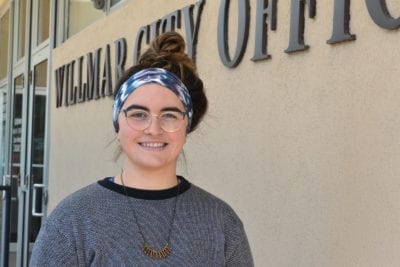
“A lot of small cities, we really rely on each other. What works for you? How have you approached this issue? I think that cohort model works really well in a rural community,” said Willmar City Planner Sarah Swedburg, who was part of a group of community leaders from our region that took part in the training.
Willmar has about 19,600 residents, with 21.2 percent identifying as persons of color and 78.8 percent identifying as white. Foreign-born residents make up about 16 percent of the community. Many racial and ethnic groups have shaped this community’s story, beginning with the original Dakota inhabitants, then Swedish and Norwegian immigrants, followed by Latinx, Somali and Karen people. Giving recognition to that full story is important in understanding equity, Sarah said. She highlighted how recent newcomers have contributed to the city’s economic and overall growth, noting that the downtown deals with fewer vacant buildings than other communities of similar size. Ensuring Willmar’s local government policies and practices work the best they can for everyone supports that growth and development.
“Changing how cities function can sometimes feel very daunting, but it isn’t as terrifying or as difficult as it can seem,” Sarah said. “There’s a pretty decent cross section of community members interested in advancing racial equity. Having that community buy in in any program a city does is really, really important.”
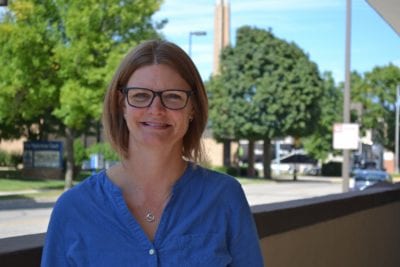
Willmar’s eight GARE participants included representatives from Ridgewater College, the city council, city staff and other community leaders like Shelly Bormann, workforce development manager for Goodwill Easter Seals and chair of the Willmar Human Rights Commission.
“The GARE program was great. I highly recommend it for any community. They will give you the structure to help move you forward if you have a community that really wants to improve race relations,” Shelly said.
As the leaders from Willmar started to examine city policies with a race equity lens, they realized one place to improve would be zoning ordinances, which regulate land use within the city limits and include rules about what someone can have stored outside their house.
“I think zoning enforcement is a really interesting area to start to talk about racial equity. Zoning enforcement is 99 percent reactionary, which in itself is not equitable,” said Sarah, who oversees zoning enforcement in her position as city planner. During the GARE training, facilitator Gordon F. Goodwin challenged participants to think about the goal of city policies.
“My goal for zoning enforcement is not to write everybody up. Our goal is to have property owners who understand how to take care of their external property, have a city that is attractive and have a city people want to live and work and play in. How do you build in the access and the understanding of those systems that isn’t penalizing people for leaving a mattress on their yard?” Sarah said.
Because of their participation in GARE, Sarah and others are reconsidering how to lead with education rather than enforcement, a conversation Sarah says is ongoing. And more race and equity conversations have been happening with city staff.
“The League of Minnesota Cities did a training with department heads in the city of Willmar. We kind of did a mini version of the GARE training. I thought it was fantastic, and I heard similar comments from some of the department heads afterward,” Shelly said.
Normalizing conversations about race is the starting point for organizing internal structures to support the work of institutional culture change and implementing new practices, procedures and policies using racial equity tools, all goals of GARE. The pilot GARE cohort for small and rural cities finished its training in December 2019 but work continues to move forward in the communities, with support from SWIF.
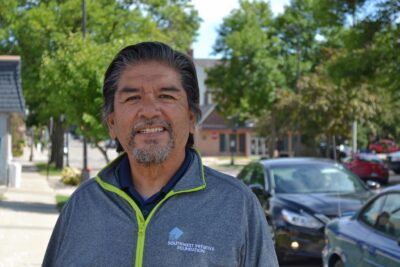
“I think it’s very beneficial to have Pablo as a SWIF staff member engaging with us as we’re working on our plan, letting us know ‘Windom is doing something like this, and Worthington is doing something like this.’ That’s very beneficial, having those connections,” Shelly said.
“There have been a lot of seeds that have been planted, and people are starting to see some of the growth happening across our region,” Pablo said.
This article appears in our 2020 CONNECT fall/winter issue. Read more from CONNECT.

